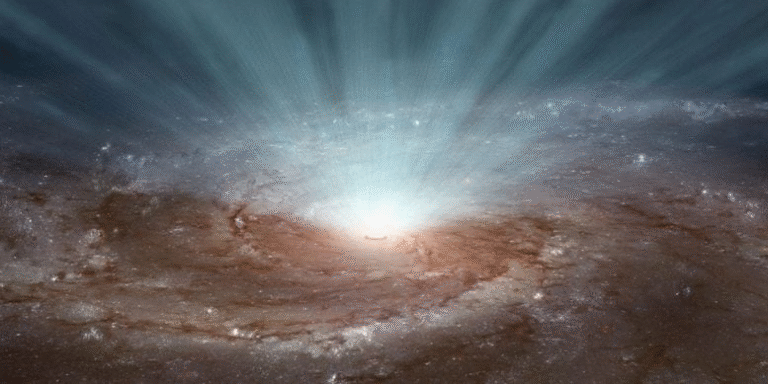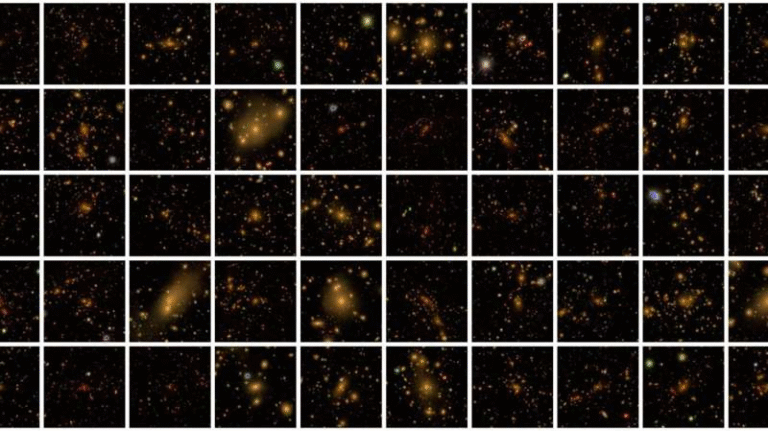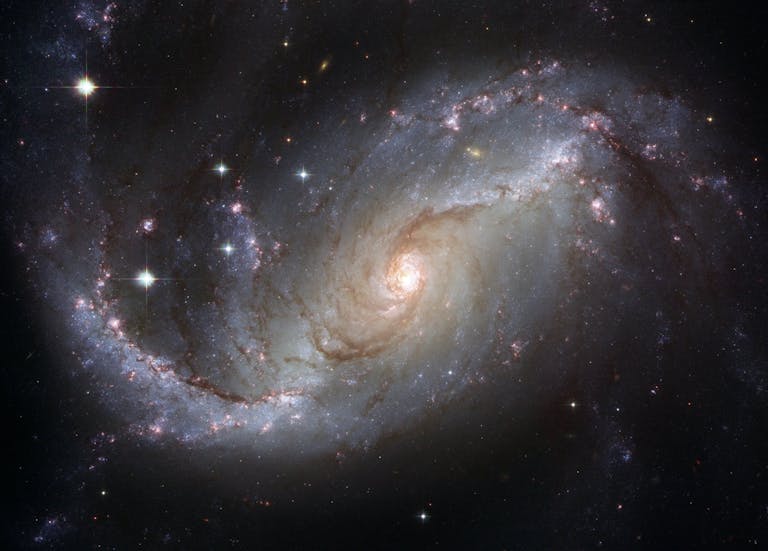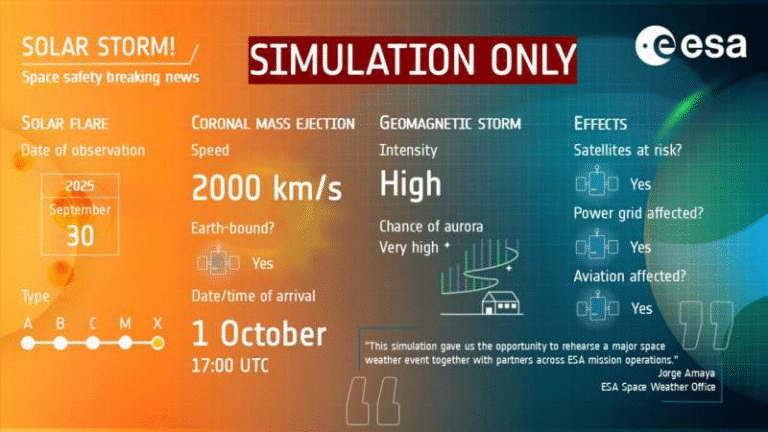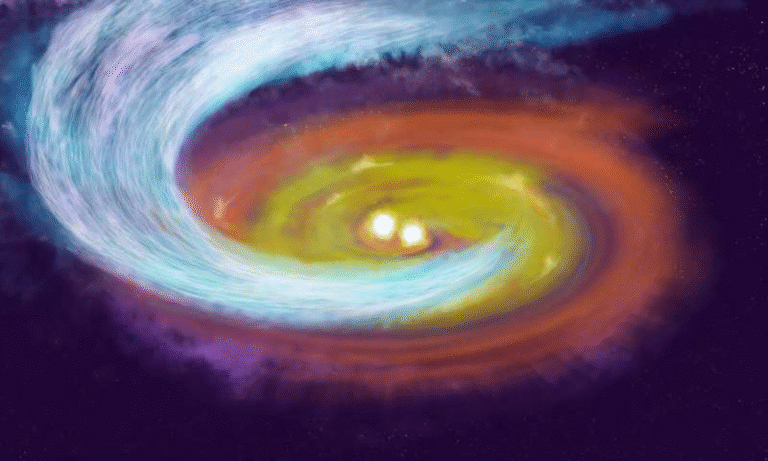NASA’s TESS Uncovers Two Jupiter-Sized Exoplanets Around Tiny Red Dwarf Stars

Astronomers using NASA’s Transiting Exoplanet Survey Satellite (TESS) have discovered two new Jupiter-sized exoplanets orbiting small, cool M-dwarf stars.
These newly confirmed planets—TOI-5916 b and TOI-6158 b—are roughly the size of Jupiter but share Saturn-like densities, making them fascinating examples of how massive gas giants can form and thrive around much smaller stars than our Sun. The discovery was made by a team led by Shane O’Brien from the University of California, Irvine, as part of the ongoing Searching for GEMS (Giant Exoplanets around M-dwarfs) Survey.
Two New Gas Giants Join the Roster
The two planets were first spotted in TESS light curve data, where tiny dips in starlight hinted at transiting worlds. To confirm that these signals were genuine planets and not stellar noise or binary companions, astronomers turned to ground-based telescopes—including the Red Buttes Observatory in Wyoming and the Swope Telescope in Chile—along with radial velocity measurements from the Habitable-zone Planet Finder (HPF) spectrograph.
After careful analysis, both planets were confirmed to be real, marking them as the latest additions to a short but growing list of 34 known GEMS—gas giants found around red dwarf stars.
Planetary Details: TOI-5916 b
The first planet, TOI-5916 b, is a Jupiter-sized world with a radius of 1.05 times Jupiter’s radius (about 11.8 Earth radii) and a mass of 0.69 Jupiter masses (roughly 219 Earth masses). From these measurements, astronomers calculated a density of 0.73 g/cm³, remarkably similar to Saturn’s.
TOI-5916 b orbits extremely close to its parent star—at a distance of just 0.028 AU (about 4.2 million kilometers)—completing one orbit every 2.37 days. That’s about 150 times closer to its star than Earth is to the Sun! Because of this tight orbit, its equilibrium temperature is estimated to be around 716 K (443°C or 830°F).
Its host star, TOI-5916, is a cool red dwarf, roughly half the Sun’s size and mass, with an effective temperature of 3,541 K. The system lies approximately 639 light-years away from Earth.
Planetary Details: TOI-6158 b
The second planet, TOI-6158 b, is slightly smaller and lighter. It has a radius of 0.93 Jupiter radii (10.4 Earth radii) and a mass of 0.42 Jupiter masses (135 Earth masses). Its density is about 0.66 g/cm³, again close to Saturn’s, which suggests a composition dominated by hydrogen and helium.
TOI-6158 b completes one orbit around its star in 3.04 days at a distance of 0.033 AU. Its equilibrium temperature is calculated to be around 636 K (363°C or 685°F)—a bit cooler than its sibling planet due to its slightly wider orbit.
The host star, TOI-6158, is another M-dwarf, smaller and cooler than the Sun, with an effective temperature of about 3,467 K. This star sits about 592 light-years from Earth.
Why These Discoveries Matter
Finding gas giants around M-dwarf stars is rare. M-dwarfs make up about 70% of the stars in our galaxy, but their smaller protoplanetary disks mean they usually form smaller, rocky planets—like those found in systems such as TRAPPIST-1. The presence of large gaseous planets like TOI-5916 b and TOI-6158 b challenges existing models of planet formation.
The prevailing core accretion model suggests that giant planets form when a solid core of at least 10 Earth masses collects enough gas before the surrounding disk dissipates. Around small stars, the disk mass may not be sufficient for this process, implying that other mechanisms—like disk instability—could sometimes play a role.
These two worlds provide valuable data points for testing such theories. They suggest that massive planets can still form around small, cool stars, even if they are relatively rare.
What Makes Saturn-Density Planets So Interesting
Both new exoplanets have densities close to 0.7 g/cm³, indicating they are puffed-up gas giants. This low density likely results from internal heating and stellar irradiation from their nearby stars, which can cause atmospheric inflation.
Planets like these occupy an intriguing middle ground: they’re not as compact as Jupiter but not as bloated as some “hot Jupiters” orbiting larger stars. Their moderate equilibrium temperatures—between 600 and 700 K—make them “warm Jupiters”, offering insights into how giant planets evolve under different stellar conditions.
The fact that both planets orbit M2-type dwarfs means their environments are quite different from typical hot Jupiter systems. M-dwarfs emit most of their light in the infrared, which affects how a planet’s atmosphere absorbs heat and redistributes it. Understanding these processes helps astronomers refine planetary climate models across a range of stellar types.
A Closer Look at M-Dwarf Stars
M-dwarf stars, also called red dwarfs, are the most common type of star in the Milky Way. They are small (typically 10–60% the Sun’s mass) and cool (surface temperatures between 2,400 K and 3,700 K). Because of their low luminosity, they can burn their hydrogen fuel for trillions of years, making them long-lived cosmic neighbors.
However, these stars are known for strong magnetic activity, including frequent stellar flares that can release bursts of radiation. This can have a significant impact on nearby planets, especially those in close orbits like TOI-5916 b and TOI-6158 b.
Despite this, M-dwarfs remain prime targets for exoplanet studies because their small size makes it easier for telescopes to detect transits and measure planetary properties precisely. A planet the size of Jupiter blocks a much larger fraction of a red dwarf’s light than it would for a Sun-like star, making discoveries like these possible even for faint, distant systems.
How TESS Continues to Expand the Exoplanet Catalog
Since its launch in 2018, TESS has surveyed about 200,000 of the brightest stars near the Sun, searching for small dips in brightness that reveal the presence of transiting planets. So far, it has identified over 7,700 candidate exoplanets, with more than 700 confirmed.
TESS is especially good at finding short-period planets—those orbiting close to their stars. Its discoveries range from rocky super-Earths to gas giants like these two new finds. By monitoring nearly the entire sky, TESS builds on the legacy of NASA’s Kepler mission, helping astronomers understand the diversity and distribution of planetary systems across the galaxy.
What Comes Next
The discovery of TOI-5916 b and TOI-6158 b opens new opportunities for follow-up studies. Future observations using instruments like the James Webb Space Telescope (JWST) or large ground-based observatories could analyze their atmospheric compositions, searching for signatures of molecules like water vapor, methane, or carbon monoxide.
Researchers also hope to study how these planets interact with their host stars’ radiation and magnetic fields, which could shed light on the long-term evolution of close-in gas giants. Because both planets are relatively bright and transit regularly, they are excellent candidates for such follow-up work.
A Step Toward Understanding Planet Diversity
In short, TOI-5916 b and TOI-6158 b add two more data points to our growing understanding of how planetary systems form and evolve around stars of all sizes. They are warm, inflated gas giants orbiting tiny, cool suns, and they remind us that even in the quiet, red glow of a dwarf star, the universe can still surprise us with worlds that defy expectations.
Research Reference:
Shane O’Brien et al., “Searching for GEMS: TOI-5916 b & TOI-6158 b are two Saturn-density planets orbiting M2 dwarfs,” arXiv (2025). DOI: 10.48550/arxiv.2510.11798

